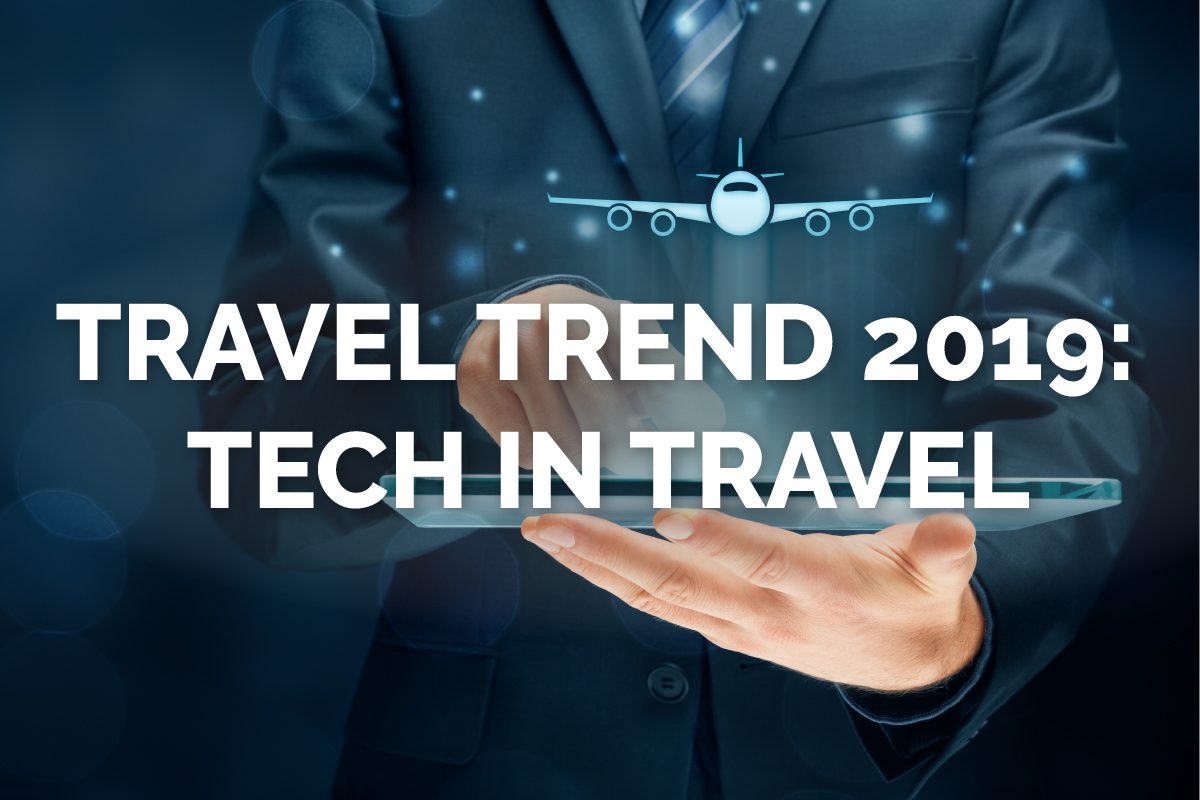Travel Technology is on a continuous rise and is one of 2019’s industry trends to watch. Today, free Wi-Fi and USB plugs are as expected as colored televisions. As a result, these amenities are no longer selling points. Here are some of the biggest and most impressive trends in today’s travel tech.
Internet of Things (IoT)

Revfine.com, an online magazine for the travel industry, says IoT involves internet-based connectivity between everyday devices like Smartphones and tablets. It allows guests to send and receive data, and makes travel processes more efficient while putting them in control of their experience.
At airports, IoT is used to create more self-service opportunities. For example, you can get plane tickets via a ticket kiosk or check your bags at an automated baggage check by scanning information on your phone. Hotels are implementing the ability to connect room controls and room keys to Smartphones to give guests the ability to personalize their space. Guests can control room temperature, lighting, and the television – the power is literally in their hands.
Learn more about how IoT is helping the travel industry (and even the environment) by reading Revfine.com’s article here.
Artificial Intelligence
Artificial Intelligence increases efficiency and customer satisfaction, the best example being with Chatboxes. Chatboxes respond to and find solutions for general travel inquiries. Compared to being put “on hold for the next available agent,” sending inquires and receiving responses instantaneously is much more preferable to customers.
Robots

Robots in the travel industry range from the kiosk that prints out airline tickets at check-in to a robotic staff members that replace the need for a human being in concierge and security roles. The Henn na Hotel in Nagasaki, Japan went so far as to execute a full staff of robots in 2015. However, it wasn’t end-all for human workers, and robo staff was cut drastically. Still, robots draw fascination and have the ability to hold, organize, and process more data. They are certainly not a gratuitous trend and you can expect to see more from them in the future.
Virtual Reality
Airlines and hotels harness virtual reality to allow customers to experience their accommodations before booking. Emirates.com has 3-D tours of their cabins, from Economy to First Class, along with tours of their unprecedented Onboard Lounge and Shower Spa. Hotels use their YouTube channels to provide 360-degree tours of their accommodations. Test it out by entering “360 VR hotel tour” in the YouTube’s search box. The results reveal scads of hotel tours and the arrow compass that appears in the top left corner allows the user to get an encompassing view of the area’s surroundings.
Augmented Reality

Augmented reality (AR) uses graphic overlay to insert features into a person’s surroundings viewed through a Smartphone or tablet. The Pokémon Go app uses this technology to place Pokémon around a user’s neighborhood. By holding the smart device in front of a spot, the graphic is revealed. The travel industry uses this same technology to enhance the guest experience while they are staying at a foreign location.
Facial Recognition

Aside from increasing security, airports and hotels use recognition technology (facial, fingerprint, and even eye) to speed up processes and create a more personable guest experience. A simple facial scan brings up data provided at booking. This results in a quicker check-in process. Hotels use a provided photo to recognize guests when they arrive, greet them by name, and show them to their room without having them wait in line at the front desk.
While there are multiple categories in travel technology, all aim to increase efficiency and personalization in travel. Sky Bird Travel & Tours has harnessed technology to develop its WINGS booking engine and transform it into an unparalleled resource for travel agents. If you haven’t experienced the advantage of WINGS, register for free today and upgrade the way you do business.

